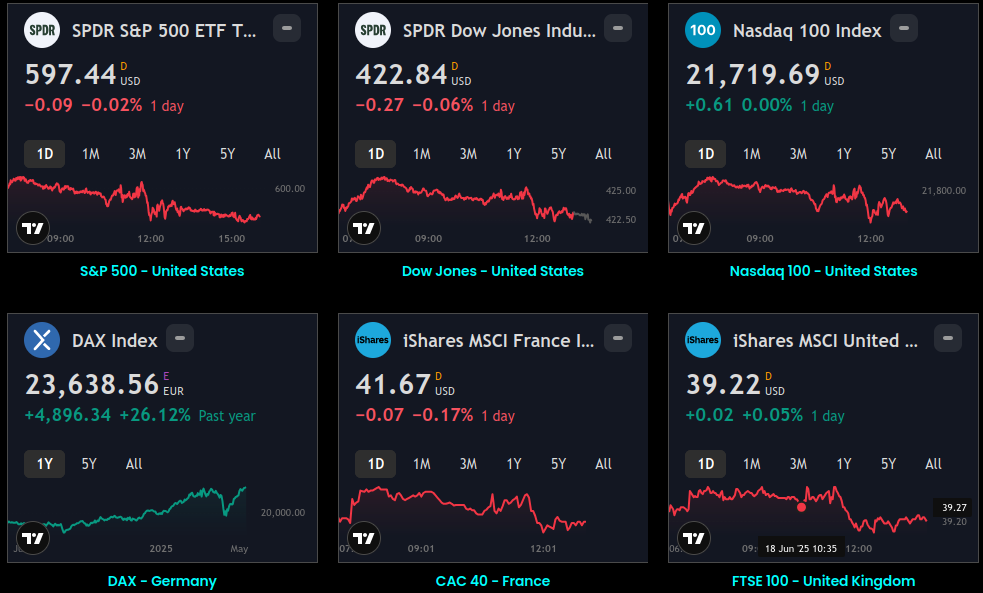WTF Dailies September 08, 2025
US stock futures pushed up Sunday evening as investors set their sights on inflation data in an otherwise calm first full trading week for the historically slowest month of the year.

- US stock futures pushed up Sunday evening as investors set their sights on inflation data in an otherwise calm first full trading week for the historically slowest month of the year.
- This week’s spotlight will be on two key inflation reports: the producer price index (PPI) on Wednesday and the consumer price index (CPI) on Thursday. Together, the data will offer fresh insight into the strength of the economy and should serve as the final test on whether the Fed is on track to deliver a widely expected rate cut at its September meeting.
- The reports follow a softer-than-expected August jobs print that bolstered hopes for easier monetary policy. Investors will be watching closely to see if inflation trends line up with that narrative, potentially clearing the path for stocks to extend their record-setting run.
- Most Asian stocks rose on Monday after soft U.S. payrolls data ramped up bets on a September interest rate cut, with Japanese stocks leading gains on strong economic growth data, even after Prime Minister Shigeru Ishiba unexpectedly resigned.
- But markets remained largely optimistic that the Federal Reserve will cut interest rates by at least 25 basis points during its September 16-17 meeting. Focus this week is also on key U.S. consumer inflation data.
- The Nikkei 225 and TOPIX indexes rose 1.5% and 1.1%, respectively, coming close to record highs last seen in mid-August.
- Revised second-quarter gross domestic product showed the Japanese economy grew much faster than initially estimated, amid strong exports and private spending.
- Growing doubts over more interest rate hikes by the Bank of Japan also boosted Japanese shares, especially as the country faces heightened political uncertainty.
- Prime Minister Ishiba said on Sunday that he will step down as the leader of the Liberal Democratic Party, just weeks after its ruling coalition suffered a crushing defeat in the upper house elections.
- Ishiba signaled that his resignation was also after Tokyo had secured a trade deal with the U.S., which will entail relatively lower tariffs on Japanese goods.
- But his abrupt resignation now opens the door to a potential leadership struggle in the world’s fourth-largest economy, especially after the LDP lost its majority in the upper house. Candidates tipped to replace Ishiba are viewed as much less fiscally conservative than the outgoing prime minister.
- China’s Shanghai Shenzhen CSI 300 fell slightly, while the Shanghai Composite and Hong Kong’s Hang Seng rose about 0.2% each.
- Government data showed the country’s trade balance grew a touch more than expected in August. But export growth slowed sharply and missed expectations, signaling some weakness in offshore demand amid cooling economic conditions in the country’s biggest markets.
- U.S. trade tariffs on China also remained relatively high, which in turn hurt demand for exports. Chinese imports also grew at a much weaker-than-expected pace, signaling soft domestic demand.
- Chinese stocks logged stellar gains in August as investors bet on more stimulus measures from Beijing, as well as more promotion of self-reliance for artificial intelligence technology. This had greatly boosted local tech stocks.
- But Chinese markets were hit with a wave of profit-taking so far in September. Focus this week now turns toinflation data for more cues on a recovery in the world’s second-largest economy.
- Still, the Hang Seng was buoyed by some gains in heavyweight Chinese stocks. Baidu rose as much as 4% after announcing plans for a note issuance, while peers Alibaba and Tencent also advanced.
- Broader Asian markets were mostly upbeat as Friday’s U.S. payrolls data sparked bets that a Fed rate cut was imminent. But concerns over a cooling U.S. economy kept gains limited.
- India’s Nifty 50 index rose 0.3% in early trade, although the index was nursing losses from the prior week as investors fretted over Washington imposing 50% trade tariffs on New Delhi.
- South Korea’s KOSPI added 0.1%, as did Singapore’s Straits Times index.
- Australia’s ASX 200 lagged as concerns over slowing economic growth pushed investors out of economically sensitive sectors such as miners and financials.
Market Close
- U.S. equity markets started the week on a positive note, supported by lower interest rates and strength in international indexes.
- Japanese stocks rallied following Prime Minister Ishiba’s resignation announcement, while European equities finished higher ahead of the French confidence vote, which resulted in the French prime minister's resignation.
- With no major economic releases scheduled for today, investor focus was likely squarely on the inflation data due later this week. Given that a September rate cut is fully priced in, August’s inflation trends could offer insight into how much flexibility the Federal Reserve has to further support the labor market.
- The 10-year Treasury yield has dipped to 4.04%, its lowest level since April, while the U.S. dollar remained under pressure. In commodities, oil prices rose after OPEC+ agreed on Sunday to a modest production increase for next month, and gold hit another record high.
- The Bureau of Labor Statistics is set to release its quarterly benchmark revisions tomorrow, based on state unemployment insurance tax records. These revisions cover data for the year through March and are expected to show that U.S. job growth was less robust than previously reported. Some economists estimate as many as 800,000 fewer job gains, averaging about 67,000 fewer jobs per month. A significant downward revision would likely intensify pressure on the Federal Reserve to ease policy, especially following Friday’s employment report, which showed minimal job growth over the past four months and the first monthly job loss since 2020. Bond markets have already fully priced in a September rate cut, and expectations now point to the fed funds rate falling below 3% by the end of next year.
- Alongside maximum employment, price stability is the Fed’s second mandate. This week brings the final set of inflation data before the FOMC meeting on September 17, with both Consumer Price Index (CPI) and Producer Price Index (PPI) figures for August due Wednesday and Thursday. Headline CPI is projected to rise to 2.9%, up from 2.7%, marking the highest level since January. This increase is partly driven by a low base effect from last August, which could exaggerate the year-over-year comparison.
- Core inflation, which excludes food and energy, is expected to remain steady at 3.1%. While tariff-related price pressures are expected to build in the coming months, their impact on August’s data may be limited. Many firms have absorbed initial costs, though a growing number may begin passing them on to consumers. However, goods inflation accounts for just 25% of core CPI, compared to 75% for services. Continued disinflation in services could help keep broader inflation pressures in check.
Global Indices:

Active Stocks:

Stocks, ETFs and Funds Screener:

Forex:

CryptoCurrency:

Events and Earnings Calendar:

This daily briefing is curated from a wide range of reputable sources including news wires, research desks, and financial data providers. The insights presented here are a synthesis of key developments across global markets, intended to inform and spark thought.
No Investment Advice: This content is for informational purposes only and does not constitute investment advice, recommendation, or endorsement.
Timing Note: Each edition is assembled based on the market context available at the time of writing. Timing, emphasis, and interpretations may vary depending on global developments and publishing windows.
















